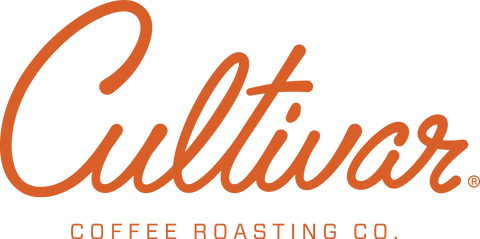
Costa Rica, 2024

(Ripe coffee cherries piled into the bed of a transport vehicle)
I am in Costa Rica for 3 days to taste coffee and visit 2 farms that we have been working with for 10 years now. It has been 6 years since my last visit, much longer than I would prefer, but that is just how life has played out during, and after the pandemic. So, it is wonderful to be back, and it has been too long.
We have been sourcing coffee with the help of Exclusive Coffees in the Capital, San Jose, Costa Rica for 10 years now. Working with Exclusive brings a lot to the table for both coffee roasters and coffee growers. Not only do they connect coffee roasting companies with coffee growers, they handle the exporting logistics, they work with many growers throughout the year, cupping their day lots, giving agronomic advice, and even provide financing to farms for fertilizer and equipment. They also run a very efficient dry mill at their lab in San Jose, that the Exclusive even hosts me for tasting coffee and provides someone to drive me to visit the farms I am working with.
This week, my primary host from Exclusive is Davian Campos, and it’s my first time meeting him. Davian is very nice, and goes out of his way to make sure I have everything I need along the way.

(Cupping coffee at Exclusive Coffees in San Jose)
Day 1
Davian picks me up from the hotel at 9 am and we drive a short distance to the Exclusive lab. They are now in a different building since my last visit, it’s bigger and I can tell that they have grown exponentially. Davian gives me a tour of the dry mill, and makes a few introductions.
Next a cupping is prepared. 2 tables back to back, with 12 different coffees on each table. 24 coffees before lunch, I am glad to have had a big breakfast. Over the course of my 3 day visit, I will cup 7 tables and taste around 75 coffees. They do not fuck around with cupping in Costa Rica.

(16 coffee samples at on the table)
After lunch, we visit Sumava, the farm owned by Francisco Mena, the founder of Exclusive Coffees. While this isn’t a farm that I buy coffee from, this is a beautiful farm, and I always love visiting. The climate at Sumava is slightly cool and breezy. It is late in the harvest but they are still picking coffee cherries here as the altitude is so high, it takes longer for the cherries to ripen.

(Side of a transport vehicle at Sumava)
The pickers are migrant workers from Nicaragua. They are working quickly to sort the ripe from the unripe cherries, a process that bolsters quality.

(Coffee pickers sorting coffee at the end of the day)
After our visit to Sumava, we drive back to the lab for one more round of cupping 12 coffees. It’s about 6:30pm when we begin this cupping, I am not excited to taste this much coffee so late in the day, but it must be done.
Day 2
Today, Davian picks me up at 8:30 and we drive 2 hours south of San José to Tarrazú, a valley surrounded by mountains that peak as high as 3,000 MASL. These mountains are apart of the Talamanca Sierra. Tarrazú is famous for its coffee, and if you wonder why, I can only suggest that you try some.

(On the way to Tarrazù)
Our first visit is with Macho Naranjo and his son, Kevin. Their micro-mill, Santa Rosa 1900 is aptly named for being located at 1,900 MASL, an abnormally high location to be fermenting coffee. Here they have a tank to ferment the coffee, they have raised beds to dry the coffee, and have processing equipment to fully prepare the coffee for export.

(Kevin, left, Jonathan, center, Macho, right)
We have been buying coffee from their farm La Plaza for 10 years now. We buy a very unique process that Macho calls “Gold Honey.” Essentially, the coffee is fermented, and dried on raised beds with 100% of its mucilage still intact. Due to the altitude of the Santa Rosa mill, and the positioning of the raised beds, the coffee fermentation is prolonged do to the lack of oxygen, and a cool cross breeze that is constantly passing over the coffee. Under “normal” circumstances (lower altitude, no cross breeze) the coffee would turn black and would be considered a black honey process. However, in this unique set of conditions, the coffee turns a golden honey color. The result is actually very sugary sweet. If you are still reading, thank you for allowing me to nerd out for a moment.

(Gold honey process - picture from 2018 visit)
After visiting the mill, Kevin rides to Finca La Plaza with us to show us the catuai coffee trees that they use for the gold honey coffee. This is my first time meeting Kevin. He is young, maybe 30 years old. It’s good to see a new generation taking interest in this farm. He is smart, and really knows his stuff.
Next we drive to Dota, not far from Tarrazú, to visit our friends, the Calderón family at Finca Granitos de Ortiz. Don Omar runs the farm, and his four daughters run their wet and dry mills. At Granitos, they are able to take their coffee cherries and fully prepare them for export.

(Johana Calderón, left Jonathan Meadows, right)
We meet up with Johana (one of the daughters) and her mother, Yorleni. They tell us that Don Omar is actually at Exclusive Coffees in San Jose cupping, so I guess we must have passed each other on the road! Yorleni drives us up to the farm in the back of their farm truck.

(The farm truck of Granitos de Ortiz)
They want to show us the second flowering on the trees of red catuai coffee that we buy from them. The smell of the flowering reminds me of jasmine and rose. The altitude is 1900 meters with heaving shade trees, so the climate is cool with a little breeze. I could stay here all day, maybe forever.

(Flowering coffee tree at Granitos de Ortiz)

(View from Granitos de Ortiz)
After walking some of the farm, and stopping to smells the flowers, we drive back down to their micro-mill to see their coffee processing of the “white honey” process that we buy from them. White honey process involves almost all of the mucilage being removed before the coffee is dried. It tastes about the same as a washed process coffee.

(Johana shows us the dry mill processing)
Before we leave, they invite us into their home to enjoy a cup of their coffee, and some cookies. I share some old photos of us all together from previous trips which brings smiles all around. Not every day is perfect, but today might have been.
Day 3
I end my trip with 3 more tables of coffee taste, 30 in all before lunch. I need to make some quick buying decisions as the shipping container is set to go aflaot soon with our importing partner, Falcon Coffees.

(Coffee sample with traceability card)
Ultimately, and as usual, I confirm a very delicious lot from Granitos, processed as a white honey. I also confirm the gold honey processed coffee from La Plaza. Both of these coffees will be familiar to the fans of Cultivar. In addition to these coffees, I also by a nano lot of Geisha from Granitos and a nano lot of SL-28 from Finca La Joyce. Joyce is another daughter of Don Omar and Yorleni, and has a little farm near Granitos. Both the Geisha and SL-28 will be featured in limited run in our black bags. They are a treat and will be worth spending a few extra dollars on.

